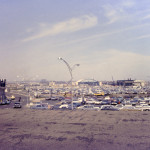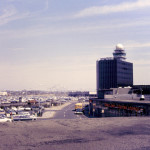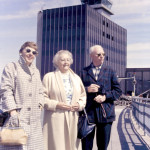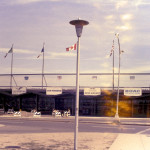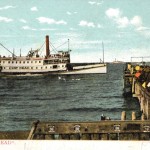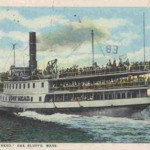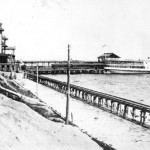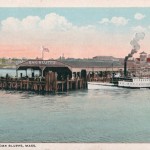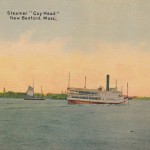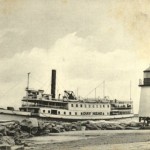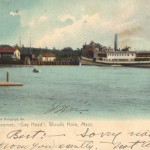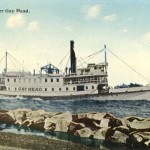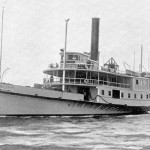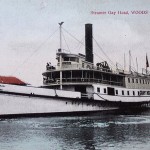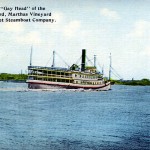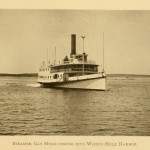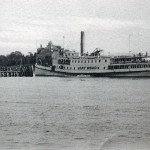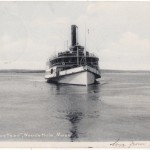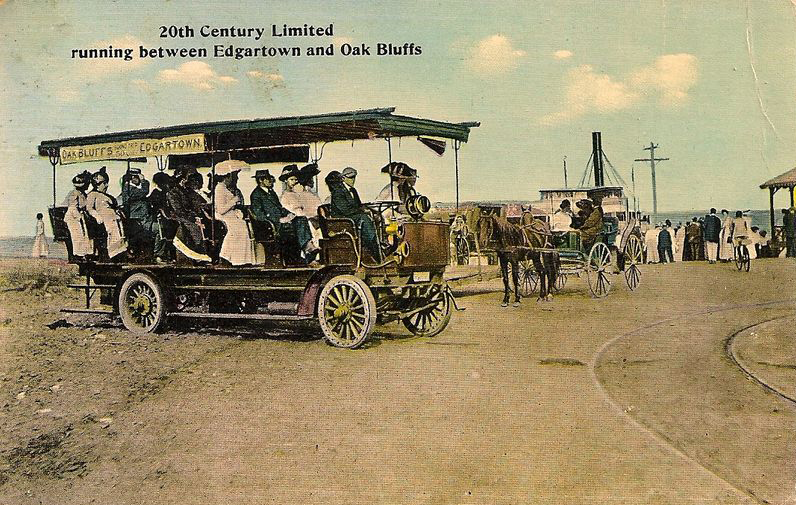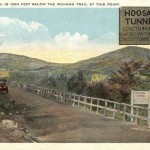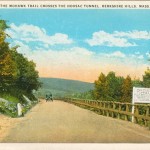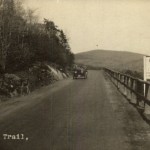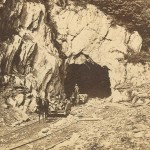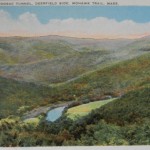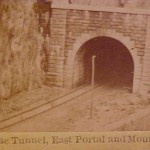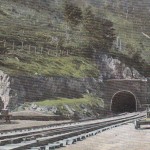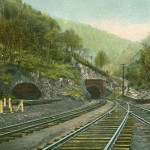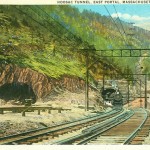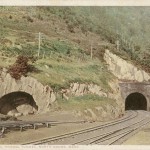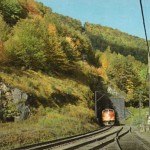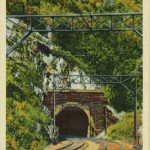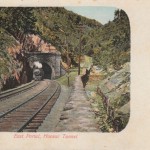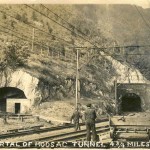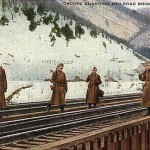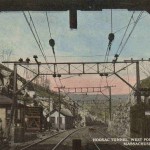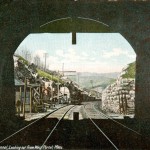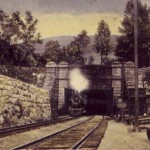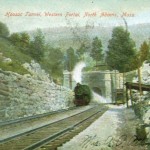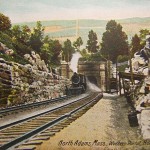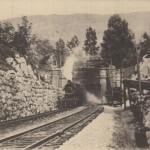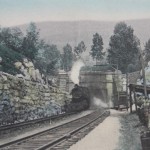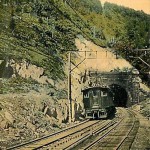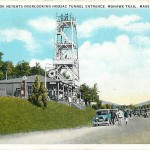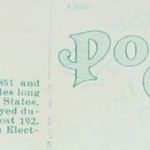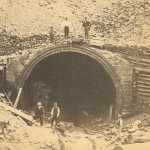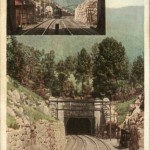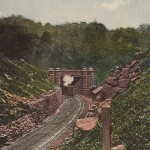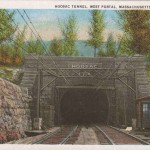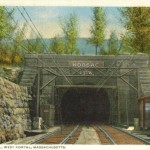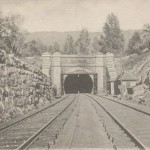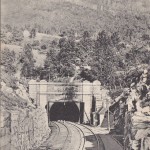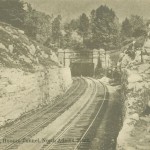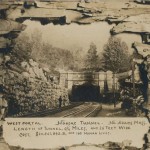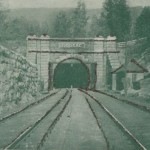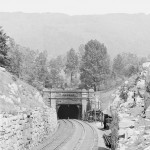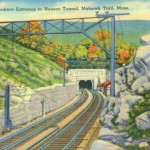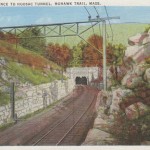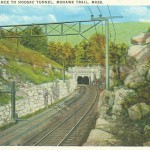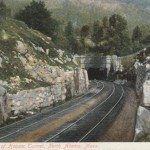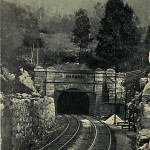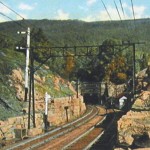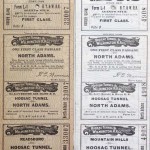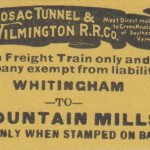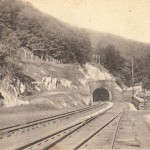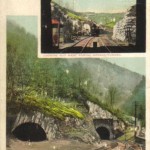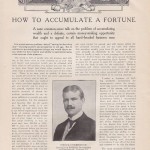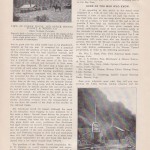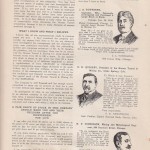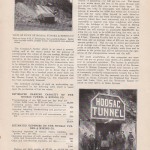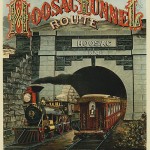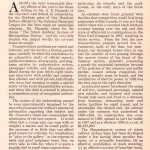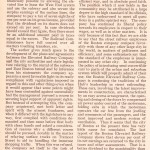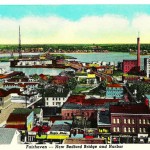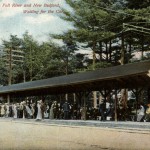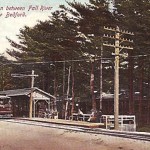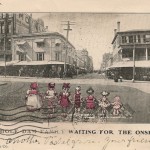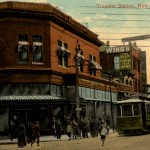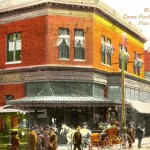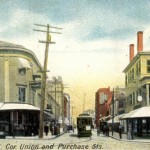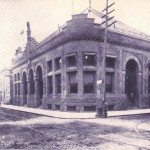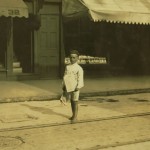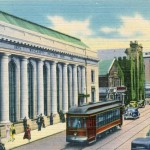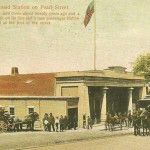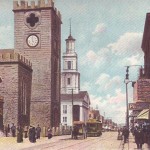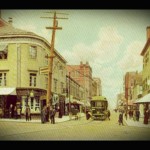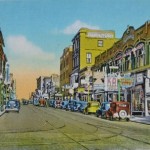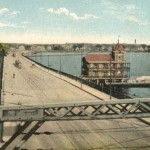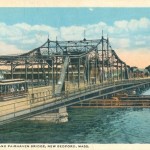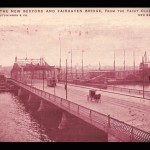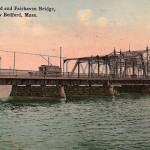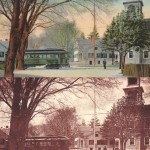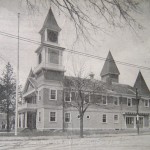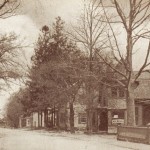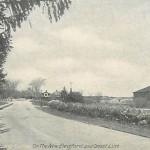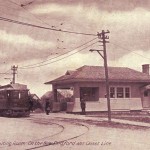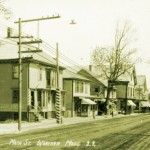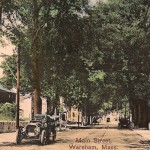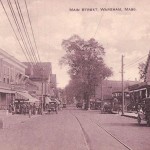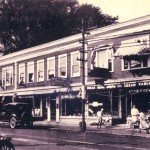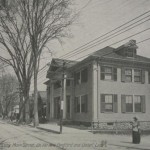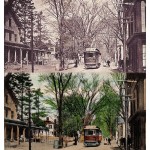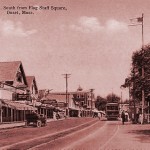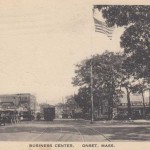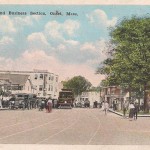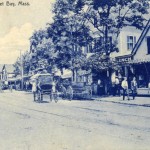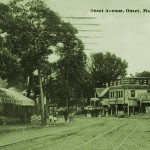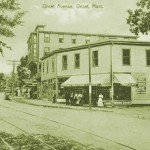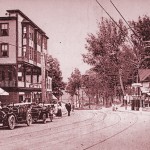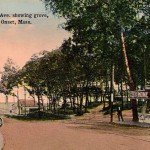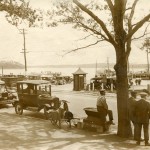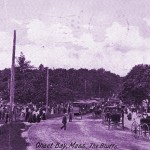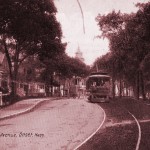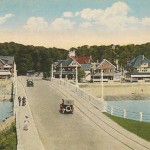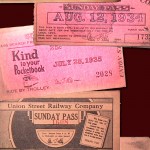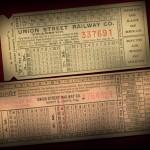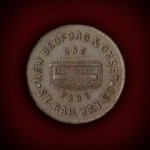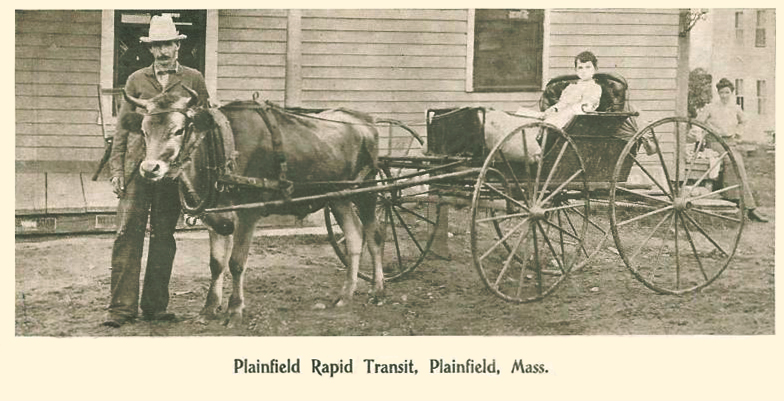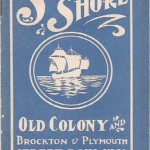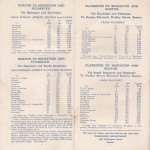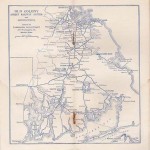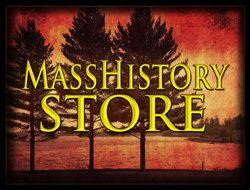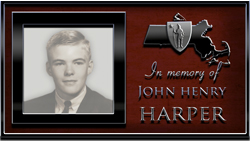Steamer Gay Head
- At January 27, 2013
- By J Harper
- In Transportation
 0
0
The Gay Head was built in 1891 in Philadelphia for the New Bedford, Martha’s Vineyard, and Nantucket Steamboat Co.
The Gay Head was 701 tons, 203 feet long, 34 foot beam, a draft of 5½ feet, with encased paddlewheels.
It was the largest sidewheeler ever operated by the company.
According to a 1961 Vineyard Gazette article:
“Her social hall, ladies’ saloon and toilet rooms were “all fitted in the Neapolitan style, with gold trimmings.” The woodwork was of cherry, and the side seats in the cabins were covered with maroon plush upholstering. The social hall deck was laid with black walnut and maple – its size, too, was imposing, for its length was 50 feet. Above the main deck were the forward promenade and upper saloon, reached fore and aft by “richly carved staircases.” Five state rooms on each side were furnished with willow furniture. The Gay Head could boast a hurricane deck extending from the stern to the pilot house; this was something earlier steamers had lacked.”
The Gay Head was commanded in 1891 by Capt. A. P. Bartow and Capt. G. L. Daggett, and later by Capt. Charles H. Fishback of Nantucket, Capt. Charles H. Coulter (resigned 1909), and Capt. J. W. Merriman.
In July 1898, the Gay Head collided with the steamer while crossing Vineyard Sound in a dense fog. The Nantucket’s bow was badly damaged in the accident.
The Gay Head operated until 1924, after 33 years of operation.
By Trolley through New Eastern New England
- At July 04, 2012
- By J Harper
- In Transportation
 0
0
Originally published by Robert H. Derrah, By Trolley through New Eastern New England. (Boston, Mass., 1904),
“The Reservation Route”, pgs. 55-60.
as published at www.stoughtonhistory.com
Almost at the door of Boston, easily accessible by trolley, lies one of the greatest recreation grounds in the world, in scenery far superior to the parks of Parisand in its refreshing value surpassing London’s famous Epping Forest. Just over the Neponset valley from the city lie the Blue Hills of Milton, the ” mountains ” of the metropolitan district. The trolley tourist from Bostonto Sharon, famed far and wide for its healthfulness, passes along this great reservation, owned by the Commonwealth, and by a diverting side trip is able to reach its most beautiful parts. Taking a Mattapan or Blue Hill car at the Dudley Street terminal of the Elevated and riding out through ” Unquity-quisset,” as the Indians called this part of Dorchester, the terminus of the Boston line is at Mattapan, beautifully situated on the Neponset River, but the car runs through to Canton and Stoughton. Soon after leaving Mattapan the cars pass the residence of Arthur Merritt, owner of the famous Savinhurst Kennels, where a fine view is had of the Blue Hill range. Running between giant elms, one comes to the beautiful residence of Park Commissioner E. P. Whitney, with a fertile valley off to the left. From here the car speedily descends the hill, only to ascend another, from which a wider view is had to the right of the elegant residences of Brush Hill Road and other parts of Milton . On a street bordered by elms of giant proportions the car passes near the fine residence of W. E. C. Eustis and runs into another valley, where a glance to the right reveals Readville and buildings and track of the Trotting Association. Passing the Rotch estate on the left, with its ornamental pagoda, near which the line leads off to the right to Readville, the car leaves the fine residences, with their windmills scattered among the trees, and goes through another shaded section to Canton Avenue, the westerly entrance to the Blue Hill reservation, containing 4,857 acres and stretching away for miles on the left. At the base of the Great Blue Hill it is worth while to pause in the journey and make the climb to this peak, which commands such a magnificent view. The Great Blue Hill is 635 feet above sea level, and the road to the summit passes the Casino buildings and then leads off through a beautiful grove known as the Wolcott Pines, winding to the right up the hill through a growth of oaks and birches to come out upon the summit. Here is the Rotch Observatory, world-famous for its meteorological experiments made with kites, and from the bald summit on which it stands the eye roams over the wilderness to the eastward, the great city on the north, the seeming plains of southern and southwestern Massachusetts on the south, and with the opalescent sea shining in the far distance over the reservation takes in a range of scenery almost unsurpassed, all of which is described in an illustrated booklet for sale at the Casino building, entitled ” Great Blue Hill and the Reservation.”
A little beyond the Administration Road, after skirting the reservation for some distance, the traveler comes to Blue Hill Street, which leads off to Hoosic-Whisick Lake, or Houghton’s Pond, with its picnic ground, half a mile from which is Ponkapoag Pond.
Going on with the trolley journey, the car passes, on the left, the fine stables and race track of the late J. Malcolm Forbes, where some of the most noted blooded horses – Arion, Nancy Hanks, Binger and others – have been bred, conspicuous objects in a charming landscape, and passing the old “Cherry Tavern,” on the top of Cherry Hill, on the right, one soon comes to the little village of Ponkapoag, located among the rolling hills as they lead down to the valley, being part of the Ponkapoag Plantation, a grant of six thousand acres of land set apart for the Ponkapoag tribe of Massachusetts Indians in [1657] by the town of Dorchester; on the left, partly hidden by a high fence, is Redman farm, the summer home of Thomas Bailey Aldrich, the well-known poet and author, where was written “From Ponkapoag to Pesth,” “Ponkapoag Papers,” etc. Passing the old burying ground, dating back to 1700, where ” Ye English Church” stood from 1754 to 1796, the car comes to Canton Corner.
Here on the right may be seen the Protestant burying ground, church, parish hall and public school, while on the opposite side is the Catholic cemetery. As the car enters Canton, the fine residences of Charles H. French and the Hon. Elijah Morse are passed on the right. Here a line runs off to the right to Canton Junction, connecting Norwood and other inland towns of southwestern Massachusetts by trolley. Canton , set off in 1797, occupies the site of one of the Christian Indian villages established by the Apostle Eliot. Here is the estate of Augustus Hemmenway, whose gift of the Canton Public Library, which the car passes, is a testimonial to his public spirit. Passing the post office, the car soon comes to ” Cobb‘s Tavern,” the junction of two trolley lines.
The one running off to the left takes one through West Stoughton to Stoughton, once a part of Dorchester , which gave up part of its domain to form the town of Canton. The early settlers once knew these now thriving towns as “Mount Hunger Fields,” but there are today ample evidences of prosperity on every side. At Stoughton connections are made for Brockton, Randolph, Easton and other points in all sections of the Old Colony.
From “Cobb‘s Tavern” the car gradually ascends through a most delightful country until Sharon is reached. This town is famed for the charm of its scenery, the purity of its atmosphere and the longevity of its residents. The original name of the town was Massapoag, and later it was called Stoughtonham, taking its present Scriptural name in 1765. Its highest land is Moose Hill, which commands a fine view off to the right, but it has many other hills, most of which are wooded with pine and hard woods. The flora of Sharon is extensive, and its wood violets are of remarkable size and fragrance. Besides its millponds there are two lakes, Wolomolopoag (“sweet water”) and Massapoag (“large water”), the latter containing 435 acres. The remarkable healthfulness of Sharon is by many attributed to the fact that no water runs into the town from any other town, while its own streams flow directly into several towns. This is because Sharon is situated on the highlands which form the watershed between the Neponset River and Narragansett Bay. Massapoag Lake, within a few minutes’ walk, is a most beautiful sheet of water, surrounded by summer residences and large hotels, and the drives and walks which can be reached from the terminus of the electric lines are many and varied.
20th Century Limited (Oak Bluffs to Edgartown) Martha’s Vineyard
- At January 10, 2012
- By J Harper
- In Transportation
 0
0
Hoosac Tunnel – Florida & North Adams – Mohawk Trail
- At November 27, 2011
- By J Harper
- In Transportation
 0
0
The Boston Elevated Railway Company – A Short Early History – 1908
- At September 27, 2011
- By J Harper
- In Transportation
 0
0
From New England Magazine, Summer 1908
Trolley Lines – New Bedford to Onset
- At August 20, 2011
- By J Harper
- In Transportation
 2
2
Trolley Lines around New Bedford and the New Bedford & Onset Street Railway Co. Line
(New Bedford, Fairhaven, Mattapoisett, Marion, Wareham & Onset)
1905 – OLD COLONY -and- BROCKTON & PLYMOUTH TROLLEY TRIPS
- At July 14, 2011
- By J Harper
- In Transportation
 1
1
A small folder (Folder #1) issued by Passenger & Advertising Dept. of the Old Colony & Brockton & Plymouth Street Railways
